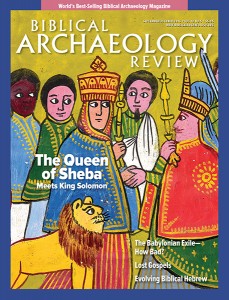

How widespread was literacy in the Land of Israel during the tenth and ninth centuries B.C.E.—the days of David and Solomon? Shmuel Ahituv and Amihai Mazar examine inscriptions from this time period and contend that literacy was not limited to society’s elite.1
Writing in the tenth and ninth centuries B.C.E. [early First Temple period] was much more common than it initially appeared. As more excavations of sites dating to this period take place, the quantity of inscriptions increases. More and more inscriptions are found in secure archaeological contexts that have good radiometric dates, allowing us to build a dependable sequence of the development of writing during this period. The data show that there was a great degree of inconsistency in writing because it had not yet fully evolved at that time, as evidenced by unidentifiable signs and by the variability in the writing of letters and in the direction of writing [from left-to-right or right-to-left], particularly in the tenth century B.C.E.
Most of the inscriptions of this period are incised on pottery or stone vessels. Writing in ink was limited to only a small number of very fragmentary inscriptions … [like those] from Tel Rehov. The use of red or red-brown ink is prominent. …
Already a library member? Log in here.
Institution user? Log in with your IP address.

